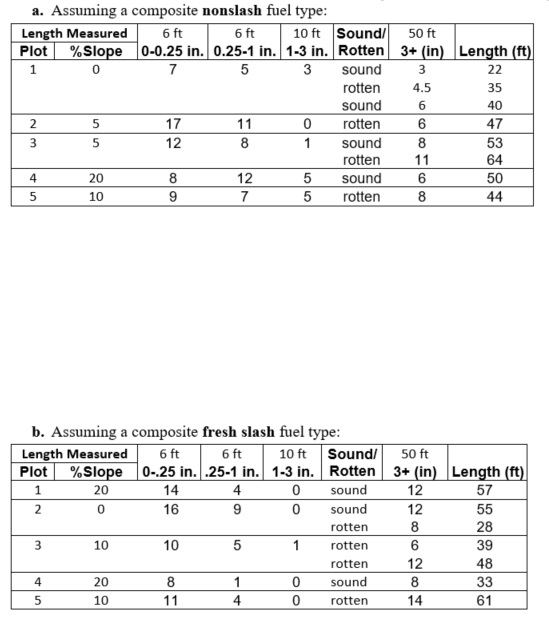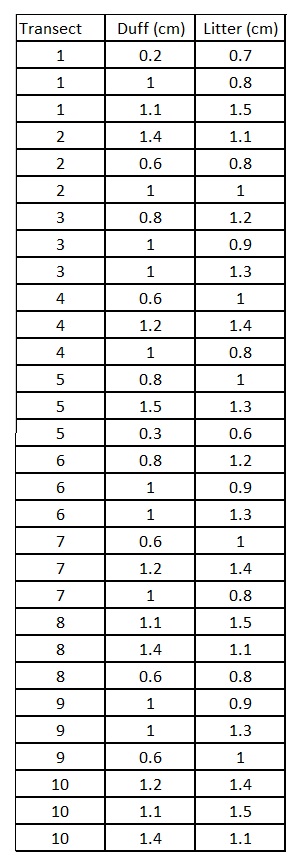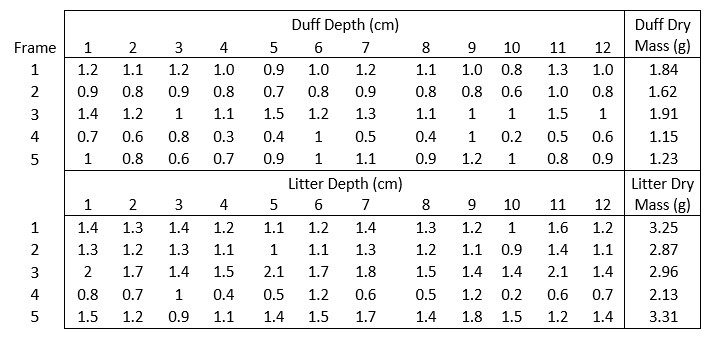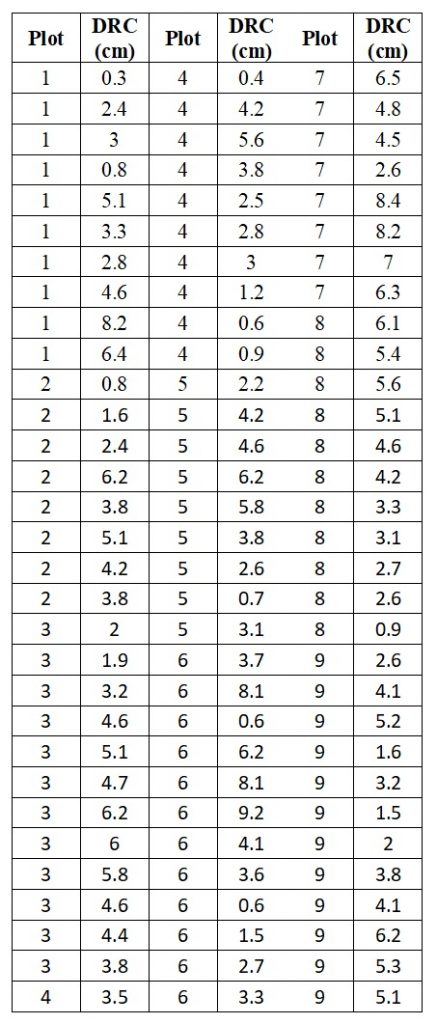F 321 – Assignment #4
Fuels Quantification and Use of Allometric Equations
Objective: This assignment will ask you to use a range of quantitative approaches for summarizing fuels observations. You will process line-transect, fixed-area quadrats, and standard forest inventory plots in order to determine woody fuel loading, duff and litter fuel loading, and canopy fuel stratum parameters using allometrics.
Student Learning Outcomes: Upon completing this assignment you should be able to:
- Determine fuel loading for a range of fuel components.
- Understand how allometrics can be used to derive hard to measure parameters.
- Understand the relationship between bulk density and fuel loading.
- Improve your understanding of how observations relate to sampling units.
1. For the provided data sets please calculate the mean and standard error of 1-hr, 10-hr, 100-hr, 1000-hr sound, 1000-hr rotten, total 1000-hr and total woody fuel loadings (tons/acre). You will need to draw on the formulas and tables of variable constants found in the fuels lecture.

2. For a stand you collect 10 Brown’s Transects with 3 duff and litter depth measurements on each, calculate the average and 95% confidence interval for duff and litter depth to the nearest tenth of a cm. Either lookup the necessary t-value in a statistics book or in Excel use =T.INV.2T(prob,df), were prob = the probability of the mean actually being outside the CI and df = # of degrees of freedom.

3. For the same site in question #2 you collected 5 litter frames (1 ft2), calculate the litter and duff bulk densities (kg m-3) to the nearest tenth kg and litter and duff fuel loading (kg ha-1) to the nearest kg using your average depths from question #2.

4. You collected the following information while inventorying a Quercus gambelli (gamble oak) stand using 9 – 4×4 m plots, calculate the average foliar and total biomass loading per hectare for the site using the following equations from Clary and Tiedemann (1986) (be careful with units).


5. From the provided variable radius plots measured with a 20 BAF instrument in a Ponderosa pine stand, calculate the average and 95% confidence range of the stands canopy bulk density, canopy fuel loading, and canopy base height using the regressions found in Cruz et al. (2003) which is available on the course website. You will need to calculate the 95% confidence interval on each parameter and propagate them through the regression equations. Either lookup the necessary t-value in a statistics book or in Excel use =tinv(0.05,df), were df = # of degrees of freedom. Report CBD and CFL to two decimal places and CBH to one decimal place.

6. For this question complete the calculations with the indicated scale.
a) Correcting for slope, calculate the tree height, crown length, and crown ratio (measurements in topographic scale).
b) Correcting for slope, calculate the tree height, crown length, and crown ratio (measurements in percent scale).
c) Correcting for slope, calculate the tree height, crown length, and crown ratio (measurements in degrees).

